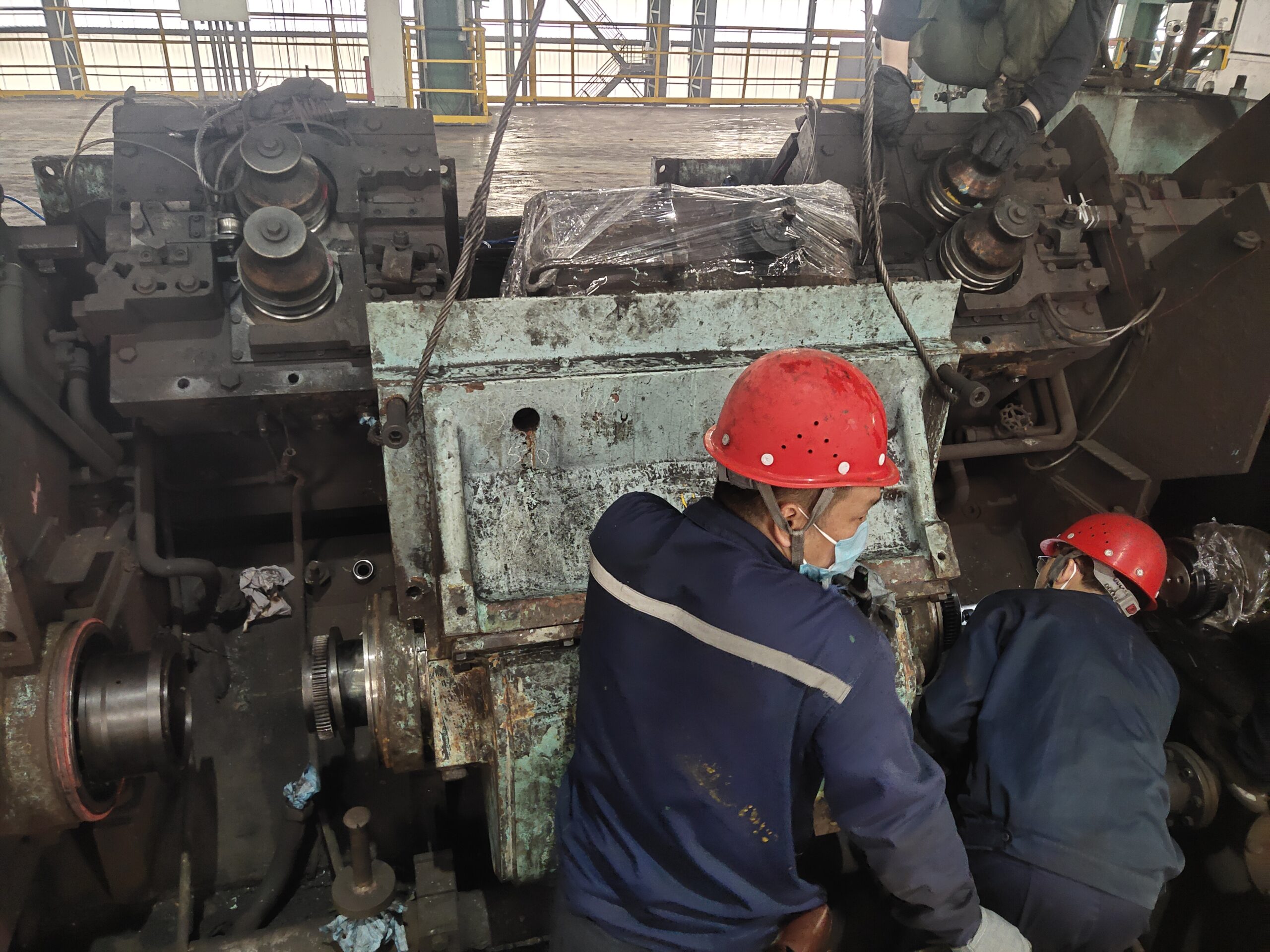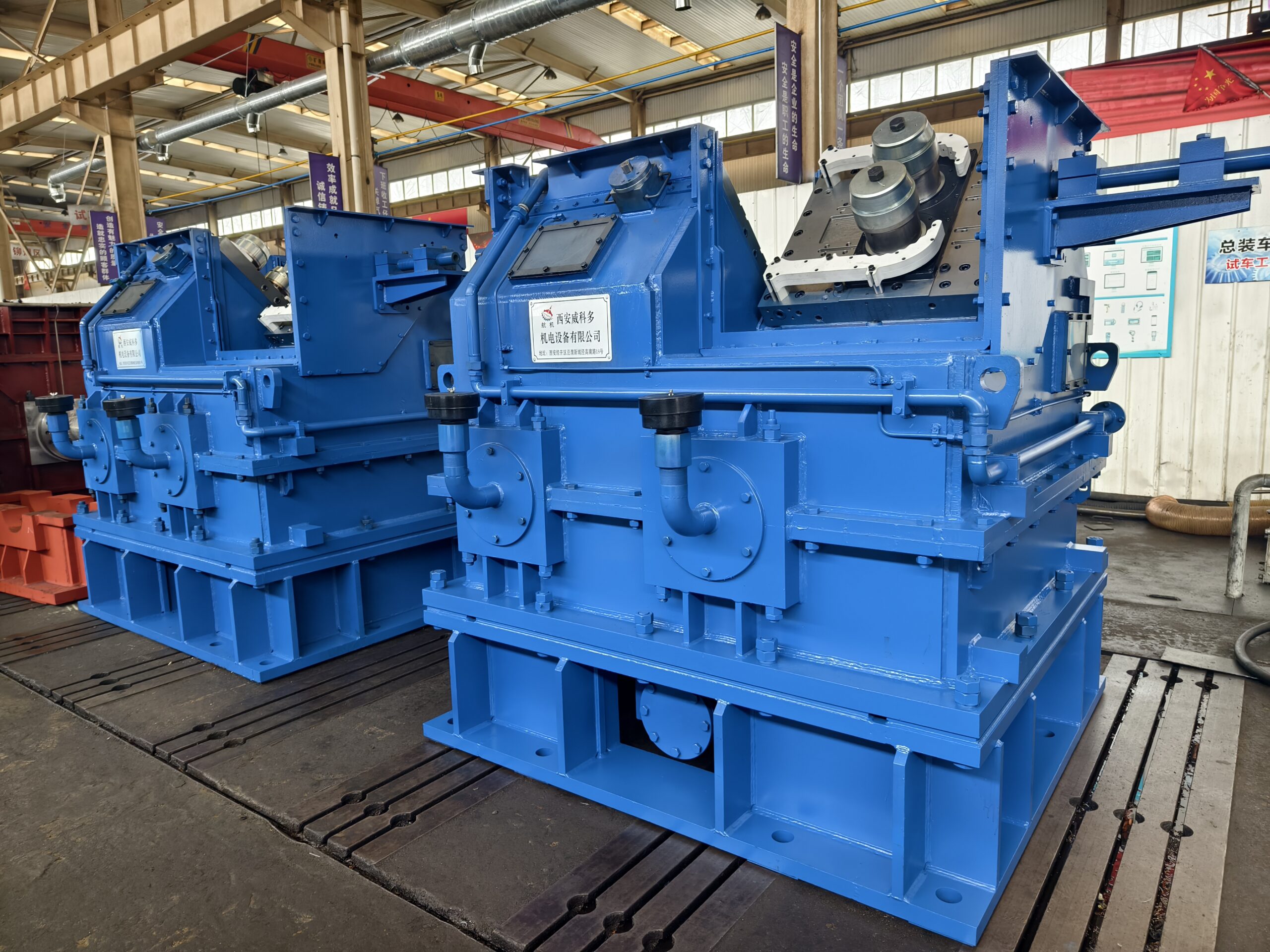Function of the pre-finishing mill
The role of pre-finishing rolling is to continue to reduce the section of the rolling stock rolled by the intermediate rolling unit, and to provide the finishing rolling unit with the correct section shape, accurate size and uniform size along the entire length of the finished wire rod, without internal and surface defects. Intermediate. The high-speed twist-free wire finishing mill is to fix the roll speed ratio between the stands, and by changing the size of the incoming material and selecting different pass systems, it can produce many specifications of wire products by continuous rolling with micro tension. This process equipment and rolling method determine that the dimensional accuracy of the finished rolling product is closely dependent on the stability of the rolling process. The actual production situation shows that the difference elimination ability of 6 to 10 passes of finishing rolling is about 50% of the size deviation of the incoming material, that is to say, in order to achieve that the deviation of the section size of the finished wire rod is not greater than ±0.1mm, it is necessary to ensure the section size of the pre-finishing rolling feed. The deviation value is not more than ±0.2mm. If the section size of the rolled piece entering the finishing mill fluctuates greatly along the length, it will not only cause the section size of the finished wire rod to fluctuate along the entire length, but also cause the rolling accident of finishing rolling. In order to reduce the occurrence of accidents in the finishing mill, it is generally required that the section size deviation of the incoming rolling stock for pre-finishing rolling is not greater than ±0.3mm.
Arrangement of the pre-finishing rolling mill
For 2 to 4 passes of pre-finishing rolling, the section of the rolled piece is small, it is more sensitive to tension, the rolling speed is also fast, and the reaction time required for tension control is very short. The dimensional accuracy and stability of the section have been difficult to achieve. Since the late 1970s, the pre-finishing rolling of high-speed wire rod mills has adopted single-line twist-free and tension-free rolling. A set of pre-finishing mills is set up for each group of roughing mills. Set up loopers between rolling passes. This process method can better solve the problem of feeding material to finishing rolling. The actual production situation shows that the pre-finishing rolling adopts 4-pass single-line non-twisting and tension-free rolling, and the size deviation of the rolling section can reach no more than ±0.2m, while other methods can only reach ±(0.3~0.4)mm. The cantilever pre-finishing mill is mainly composed of two horizontal rolling mills, two vertical rolling mills, three vertical loopers and safety covers. Each rolling mill stand consists of a gear box and rolls. The function of the gear box is to transmit the torque output by the motor or reducer to the roll shaft. The horizontal transmission box has a pair of cylindrical helical gears; the vertical transmission box adds a pair of spiral bevel gears, and the two vertical transmission boxes have different spiral bevel gear ratios. The roll box is installed by flange insertion. Each roll box has two upper and lower rolls. The upper and lower rolls do not mesh with each other, but are driven by a pair of cylindrical helical gears in the transmission box. A cantilevered roll ring roll is installed on each roll shaft, and the roll shaft is supported by the front and rear oil film bearings and installed in the eccentric sleeve. The eccentric sleeve is driven and rotated by the left and right screws and nuts in the roll gap adjustment mechanism, so that the upper and lower roll shafts are opened and closed symmetrically and evenly relative to the rolling center line, so as to realize the roll gap adjustment.
The main features of the cantilever pre-finishing mill unit are as follows: (1) The transmission box and the roll box are independent parts, which are easy to assemble and disassemble. (2) The roll gap adjustment adopts eccentric sleeve type. The biggest advantage of this adjustment mechanism is to keep the rolling center line unchanged. (3) The thrust bearing at the end of the roll shaft effectively solves the problem of the axial movement of the roll shaft and ensures the dimensional accuracy of the rolled piece. (4) The structure and size of the roll box of the horizontal stand and the vertical stand are exactly the same, and all the parts of the roll box can be interchanged. (5) Use special tools to assemble and disassemble the roller ring, which is fast and reliable.




